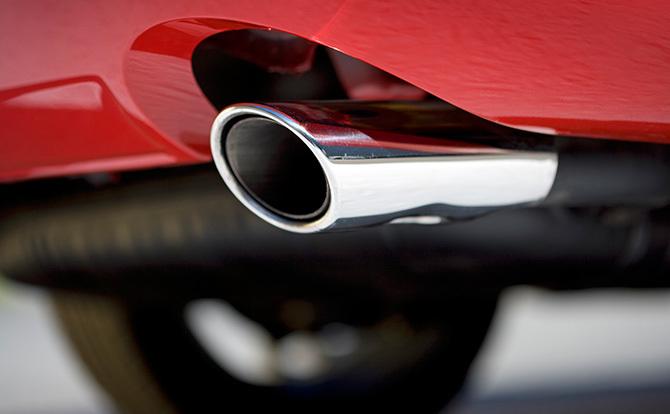
Car Exhaust Leak Repair: Symptoms and How To Fix It. Car exhaust issues can be both a nuisance and a potential safety hazard if left unattended. In this friendly guide, we will explore everything you need to know about Car Exhaust Leak Repair, from recognizing the symptoms to understanding common causes and even tackling a DIY fix. Whether you’re a seasoned car enthusiast or simply a vehicle owner looking to keep your ride in tip-top shape, this article is designed to walk you through each step with clarity and confidence.
Car Exhaust Leak Repair: Understanding the Basics
Before diving into the nitty-gritty details, it’s important to understand what an exhaust leak actually is and why addressing it promptly is crucial. Your car’s exhaust system is designed to channel harmful gases away from the engine and passengers. When a leak occurs, it disrupts this system, allowing dangerous fumes to escape near the engine bay or even into the cabin. Car Exhaust Leak Repair not only improves your vehicle’s performance but also ensures your safety on the road.
An exhaust leak can compromise engine efficiency, lead to increased emissions, and, in some cases, affect your car’s overall performance. When gases like carbon monoxide seep into areas where they shouldn’t, it can create health hazards for both drivers and passengers. Understanding the basics of your exhaust system helps you appreciate the importance of timely repairs and maintenance.
Car Exhaust Leak Repair: Recognizing the Symptoms

One of the first steps in effective Car Exhaust Leak Repair is being able to spot the warning signs. Recognizing symptoms early on can save you from more extensive damage down the road. Here are some common indicators that your exhaust system might be leaking:
- Unusual Noises: A common symptom is a ticking or hissing sound coming from under the vehicle. This noise is often more noticeable when the engine is running, especially during acceleration.
- Decreased Fuel Efficiency: An inefficient exhaust system can alter your car’s engine performance, leading to a drop in fuel economy. If you notice that you’re visiting the pump more frequently, it might be time to inspect your exhaust. (Read More: A1 Automotive: Revolutionizing Car Repairs with Cutting-Edge Technology in 2024).
- Vibrations: A leak can cause unusual vibrations, especially if the exhaust system is misaligned. These vibrations might be felt through the steering wheel or the car’s floor.
- Rattling Sounds: Loose or damaged components in the exhaust system can produce a rattling noise, particularly when driving over rough terrain.
- Dashboard Warning Lights: In some modern vehicles, the check engine light may illuminate if the exhaust system isn’t functioning properly. This can be a subtle hint that an exhaust leak has occurred.
- Visible Rust or Damage: Regular inspections might reveal rust spots or holes along the exhaust pipe, muffler, or catalytic converter. These physical signs are clear indicators that Car Exhaust Leak Repair is needed.
By staying attentive to these symptoms, you can quickly identify when it’s time to consider repair options, ensuring your vehicle remains safe and efficient.
Car Exhaust Leak Repair: Identifying Common Causes
Understanding what causes an exhaust leak can help you prevent future issues and manage repairs more effectively. There are several common culprits behind exhaust leaks:
- Rust and Corrosion: Exposure to moisture, road salt, and other corrosive elements can lead to rust on your exhaust system. Over time, this rust can cause holes or weak spots in the metal.
- Physical Damage: Road debris, potholes, or accidents can physically damage components of the exhaust system. Even minor collisions can create misalignments or cracks that result in leaks.
- Worn-Out Gaskets: The gaskets connecting various parts of the exhaust system can degrade over time. Once these gaskets start to fail, they may allow gases to escape. (Read More: Why Christian Brothers Automotive Stands Out in the Auto Repair Industry in 2024).
- Faulty Installation or Modifications: Sometimes, aftermarket modifications or improper installations can lead to exhaust leaks. If parts aren’t fitted correctly, it can create gaps where exhaust gases escape.
- General Wear and Tear: Like any other part of your vehicle, the exhaust system experiences wear and tear. Regular usage, combined with environmental factors, can eventually lead to deterioration and leaks.
Knowing these causes is the first step in effective Car Exhaust Leak Repair, as it allows you to address the underlying issues and choose the most appropriate repair method.
Car Exhaust Leak Repair: Essential Tools and Materials

When it comes to tackling Car Exhaust Leak Repair yourself, having the right tools and materials is essential. Here’s a list of common items you might need before starting the repair:
- Jack and Jack Stands: These are essential for safely lifting and securing your vehicle while you work underneath.
- Wrenches and Socket Sets: A comprehensive set of wrenches will help you remove and tighten bolts and clamps.
- Exhaust Sealant: High-temperature sealants or muffler cement can temporarily seal small leaks.
- Exhaust Tape or Patch Kits: For minor leaks, specially designed exhaust tape or patch kits can provide an effective fix.
- Wire Brush: This tool helps clean off any rust or debris before applying sealants or patches.
- Gloves and Safety Glasses: Protecting your hands and eyes is crucial when working with automotive repairs.
- Inspection Mirror: This handy tool lets you check hard-to-see areas of your exhaust system.
Investing in these tools not only makes the repair process smoother but also enhances safety while performing Car Exhaust Leak Repair.
Car Exhaust Leak Repair: Step-by-Step DIY Repair Process
For those who prefer a hands-on approach, here’s a detailed, step-by-step guide to DIY Car Exhaust Leak Repair:
- Safety First:
Ensure your vehicle is parked on a flat, stable surface. Use a jack to lift the car and secure it with jack stands. Never work under a car that is only supported by a jack. - Locate the Leak:
Start your engine and listen for unusual sounds. With the car cooled down, use a flashlight to inspect the exhaust system for visible rust, holes, or cracks. Running your hand (with proper protection) near the exhaust might help you feel for any unusual drafts of air. - Clean the Affected Area:
Use a wire brush to remove any rust, dirt, or debris from around the leak. A clean surface is essential for the repair materials to adhere properly. (Read More: Best AC Car Freon Types for Maximum Cooling). - Apply Sealant or Patch:
Depending on the severity of the leak, you can choose a high-temperature sealant or a patch kit. For small leaks, apply the sealant generously around the affected area. For larger holes, use an exhaust patch kit according to the manufacturer’s instructions. - Secure with Clamps or Exhaust Tape:
In addition to sealants, using exhaust tape or clamps can provide extra security. Wrap the tape tightly around the leak or position the clamp over the patch. This helps hold the repair in place while the sealant cures. - Allow Proper Curing Time:
It is important to let the sealant cure completely. Refer to the product instructions for curing times before driving your car again. Avoid starting the engine too soon to ensure a solid repair. - Test Your Repair:
Once the curing time has passed, start your engine and carefully check if the leak has been sealed. Listen for any residual noises and inspect the repair area for any signs of escaping gases. - Monitor Over Time:
Even after a successful repair, it is wise to periodically check the repaired area. This ensures that the fix remains effective and prevents future issues.
This step-by-step process is a straightforward guide for Car Exhaust Leak Repair that can save you money and reduce the need for professional repairs in minor cases. However, if the damage is extensive or you’re unsure about the repair process, seeking professional help is always a good idea.
Car Exhaust Leak Repair: Maintenance Tips and Safety Precautions

Prevention is always better than repair. Implementing a few maintenance tips can help you avoid future problems and reduce the risk of Car Exhaust Leak Repair becoming a recurring issue:
- Regular Inspections:
Make it a habit to visually inspect your exhaust system during regular car maintenance. Look for signs of rust, wear, or damage. Early detection can save you from more serious problems later on. - Keep Your Car Clean:
Washing your car regularly, especially in winter when road salt is prevalent, can help reduce rust formation on the exhaust system. A clean vehicle is less prone to corrosion. - Avoid Overloading:
Excessive weight can put additional stress on your car’s exhaust system. Be mindful of your car’s load limits to prevent unnecessary strain on the components. - Professional Check-Ups:
Even if you’re comfortable with DIY repairs, having a professional inspect your exhaust system annually can catch issues that might not be obvious to an untrained eye. - Safe Working Environment:
Always perform repairs in a well-ventilated, safe area. When working on the exhaust system, ensure the engine is cool to avoid burns. Use protective gear such as gloves and safety glasses. - Follow Manufacturer Guidelines:
Your vehicle’s owner manual contains specific maintenance schedules and recommendations for exhaust care. Following these guidelines can help you avoid unexpected issues.
Taking these preventative measures not only minimizes the risk of future leaks but also contributes to the overall longevity and performance of your vehicle. By maintaining a routine check and addressing issues early, you’ll reduce the frequency and severity of Car Exhaust Leak Repair incidents.
Working on your car can be a rewarding experience, especially when you see the tangible results of your labor. The steps outlined above are designed to be approachable, even for beginners, while still offering detailed guidance that can benefit even the most experienced DIY enthusiasts. Remember, every car is unique, and slight variations in your exhaust system might require minor adjustments to these steps.
Moreover, understanding your car’s exhaust system in depth can enhance your overall vehicle knowledge and help you diagnose other issues that might arise. Whether you’re hearing a faint hissing sound or noticing a decrease in performance, being proactive about Car Exhaust Leak Repair is a smart approach. Taking the time to fix the problem early can help maintain your vehicle’s efficiency and prevent more serious—and expensive—repairs down the line.
Regular care and maintenance are key. Car Exhaust Leak Repair is not just about fixing a temporary problem; it’s about ensuring that your vehicle remains safe, efficient, and enjoyable to drive. Each step of the process, from identifying symptoms to implementing a reliable fix, plays a vital role in keeping your car in optimal condition. Embracing a hands-on attitude toward vehicle care can foster a greater sense of responsibility and pride in your ride, while also saving money and avoiding potentially dangerous situations.
For those who enjoy the satisfaction of a DIY repair, the outlined methods provide a comprehensive guide that balances technical detail with accessibility. With the right tools, a bit of patience, and a focus on safety, you can effectively manage Car Exhaust Leak Repair on your own. This approach not only resolves the immediate issue but also empowers you with knowledge that will be useful for any future maintenance tasks.
Ultimately, whether you opt for a DIY approach or choose professional help, understanding the fundamentals of Car Exhaust Leak Repair is an essential skill for every car owner. Staying informed and vigilant can make all the difference in keeping your vehicle running smoothly and safely over the long term.





